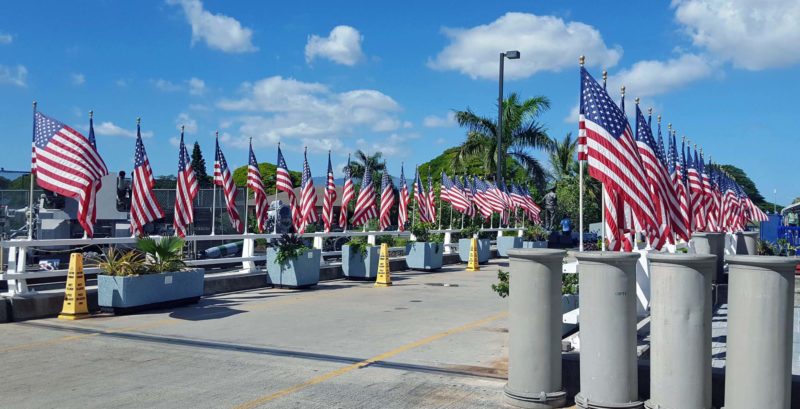Pearl Harbor is north of Honolulu on the west side of O’ahu. Early on December 7, 1941, a private at Kahuku on the north point of the island noticed some blips on his radar screen, so he called his commanding officer and reported his observation. On that day, twelve B-17s were approaching Hawai’i from California, intended for use in the Philippine Islands. The private was not supposed to know about the B-17s, so the commanding officer told him not to worry about the radar blips. In fact, the blips were Japanese bombers approaching Pearl Harbor.
To save fuel, the B-17s were flying with skeleton crews and no ammunition. When they saw fighter aircraft coming to meet them, the pilots assumed they were American planes and were happy to have an escort to the landing field. When the “friendly” planes started firing at them, the B-17 pilots thought it was a military drill. When the “friendly” planes started strafing the aircraft lined up on Hickam Field at Pearl Harbor, one of the B-17 pilots thought “Somebody’s going to the brig for using live ammunition!” Unfortunately, the event was the Japanese attack on Pearl Harbor, which brought the U.S. into World War II.
Pearl Harbor is now a National Historic Landmark as well as an active military base. Ted and I visited the site today.
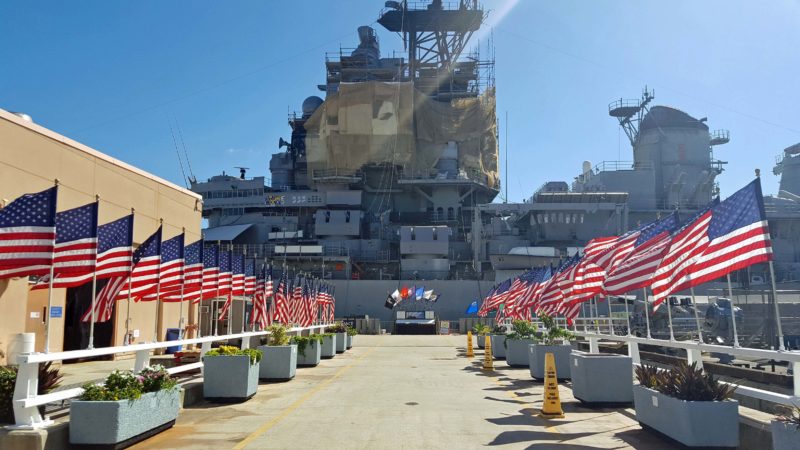
The entrance to the Pearl Harbor memorials has the USS Missouri (“Mighty MO”) as its focal point and 50 U.S. flags lining the walkway. The Missouri was built 108 feet wide so it could pass through the 110-foot wide Panama Canal. From keel to top, it is 20 stories tall. Walking around on the battleship gives visitors a chance to experience how massive it is.
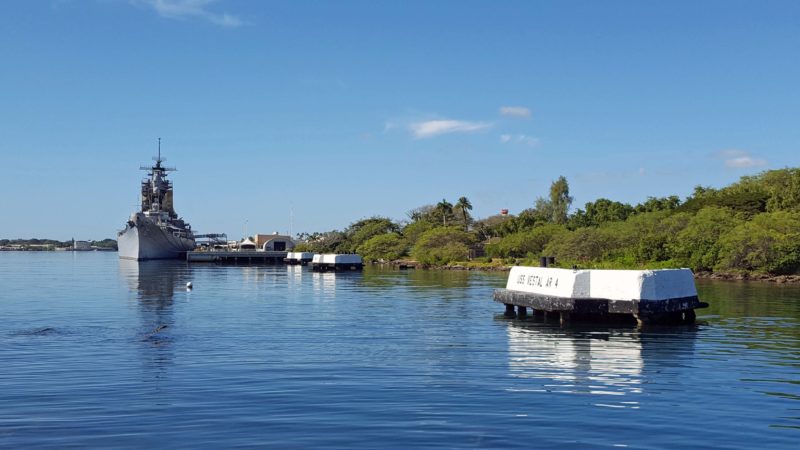
Here’s a view of the Missouri from the Arizona memorial. The white markers signify the places at which other U.S. battleships were sunk by Japanese bombers.

This is one of the mess halls on the Missouri.
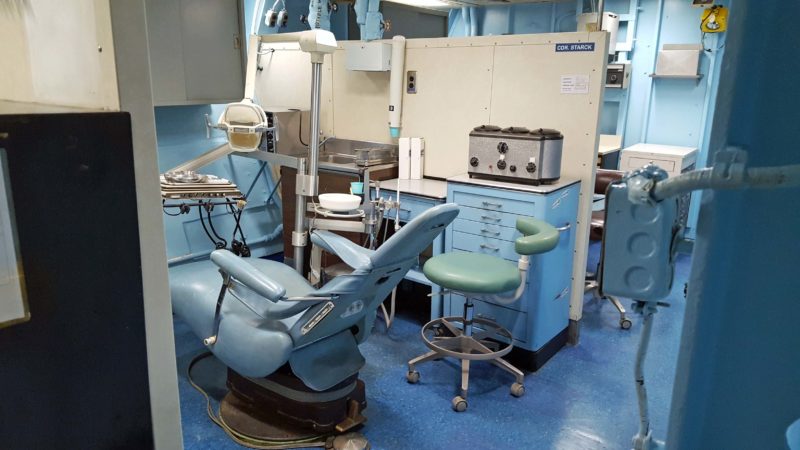
Surprising to me, but necessary if you think about it–a dental office on board a battleship.
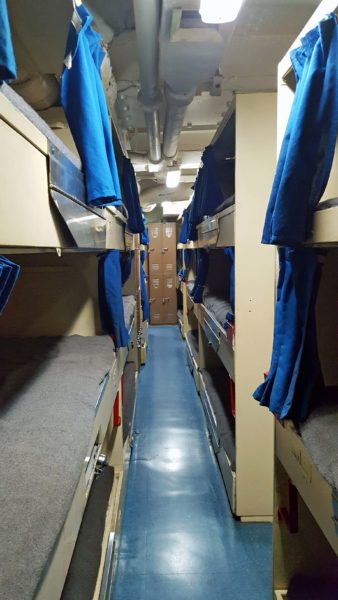
The sailors referred to their tight sleeping quarters as “coffin racks.”
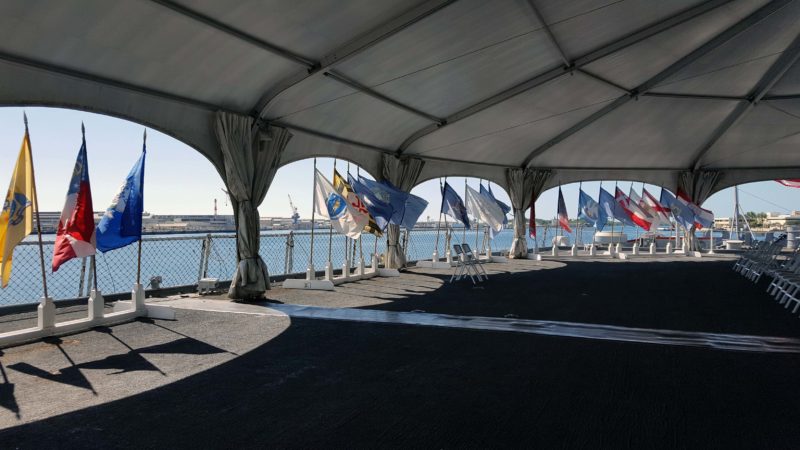
Flags for all 50 states fly on the quarterdeck of the Missouri. They are arranged in order of their entry into the Union.
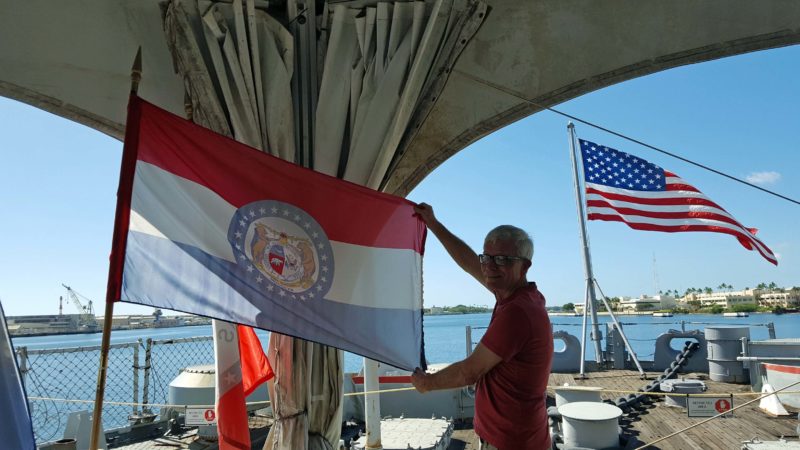
At the beginning of our tour of the Missouri, each visitor was asked to say where they were from. Ted and I said “Missouri” and the tour guide responded with “Welcome to your ship.” We found the Missouri state flag on the quarterdeck. It’s the last visible unfurled flag on the right in the picture above this one.
The USS Missouri was the site of the surrender of the Empire of Japan which ended World War II. The ceremony lasted 23 minutes and included high-ranking personnel from each of the Allied nations. Playing all his power cards to intimidate the Japanese, Gen. Douglas MacArthur, Supreme Commander for the Allies, had 3,000 uniformed U.S. military men on board for the ceremony and over 200 warships in the harbor surrounding the Missouri. When everyone was assembled on deck, MacArthur pulled one more power play and made the assemblage wait a full two minutes for him. When the formalities were complete, 1,000 military planes performed a ceremonial flyover above the Missouri.
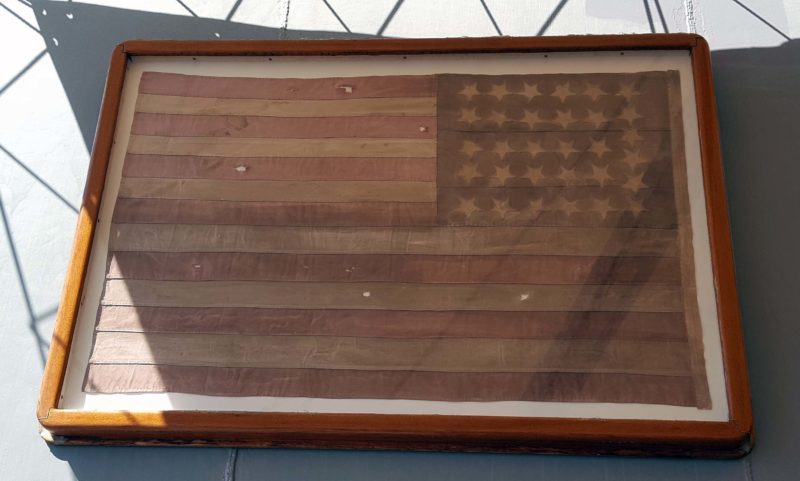
During the surrender ceremony, the deck of the Missouri was decorated with this 31-star American flag that had been taken ashore by Commodore Matthew Perry in 1853 after his squadron of “Black Ships” sailed into Tokyo Bay to force the opening of Japan’s ports to foreign trade. The flag was displayed with the reverse side showing because it was so fragile that the conservator at the Naval Academy Museum had sewn a protective linen backing to one side to help prevent the fabric from deteriorating, leaving its “wrong side” visible. The flag was displayed in a wood-framed case secured to the bulkhead overlooking the surrender ceremony.
A shuttle boat takes visitors from the Pearl Harbor pier to the USS Arizona memorial in the harbor.
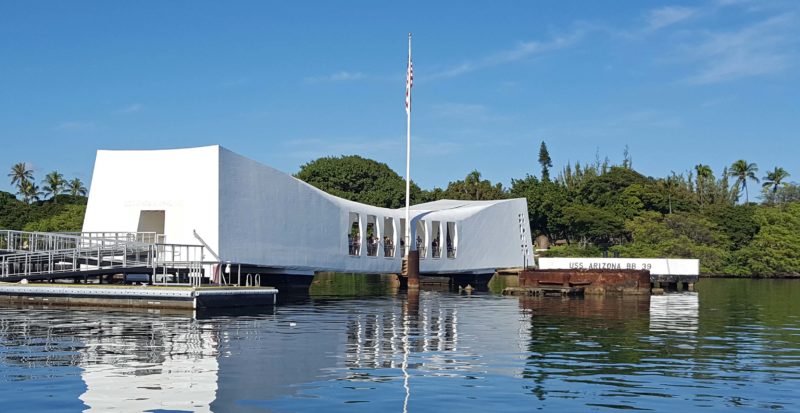
The Arizona Memorial does not touch the water. It is a Navy tradition that those who die in service remain on eternal assignment, so the memorial hovers above the sunken battleship to protect the ship and the resting place of the 1,102 servicemen who are entombed in the wreckage.
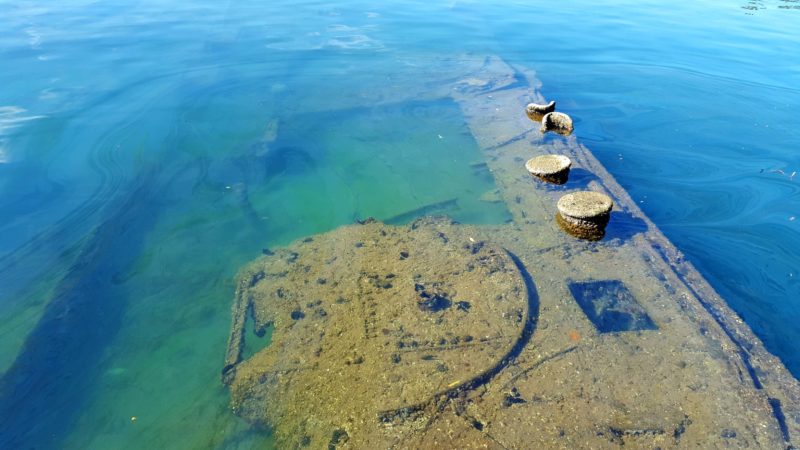
The sunken Arizona is visible from the memorial building.

This wall includes the names of the servicemen who died on board the Arizona in the Pearl Harbor attack–the greatest death toll ever on a U.S. warship. Only 229 bodies were recovered.
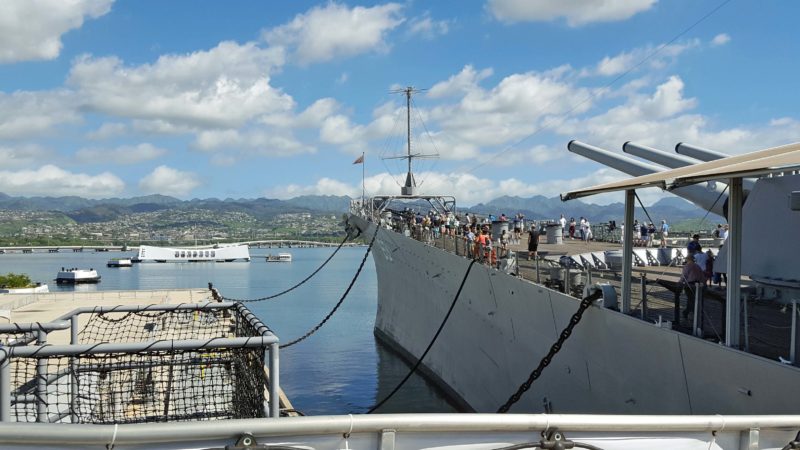
The guns of the battleship Missouri are symbolically aimed over the Arizona Memorial to protect the sunken ship and the entombed servicemen. The Arizona was the first ship to be sunk by the Japanese, beginning the U.S. involvement in World War II; the Missouri was the battleship on which the Japanese Instrument of Surrender was signed to end World War II.
In addition to the Arizona memorial and the battleship Missouri, the Pearl Harbor memorials also include the USS Bowfin–a World War II-era submarine, and the Pacific Aviation Museum–two hangars housing World War II planes.
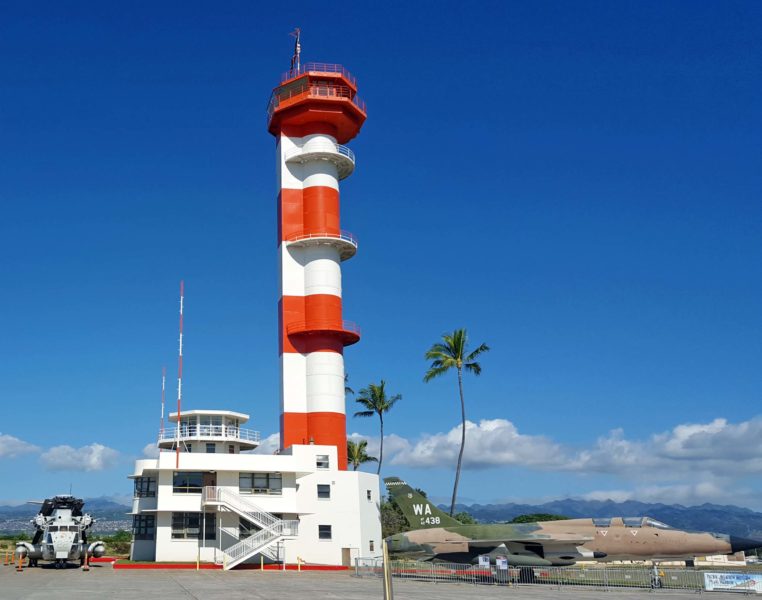
This looks like a control tower–probably because it’s on an airfield–but it’s actually a water tower. It was prominently featured in the movies Tora, Tora, Tora and Pearl Harbor.
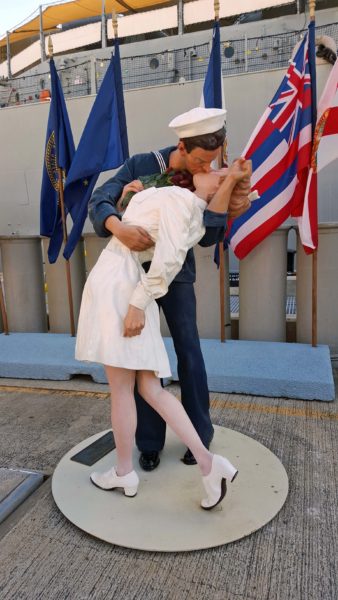
This is a popular piece of art. We saw a larger version of it in Key West last spring.
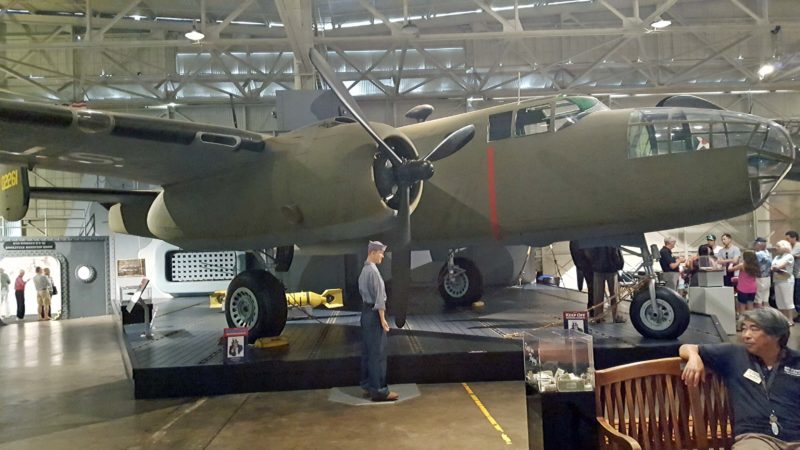
This is a B-25 like my dad piloted in World War II. He told me once that when he looks back at these planes, he wonders how the pilots ever had the nerve to fly them over the ocean.
The Purple Heart is the oldest military decoration in the U.S., going back to George Washington’s “Badge of Military Merit.” After 1942, the Purple Heart was presented only for being wounded in combat. The name of this medal is derived from purpleheart wood–the only wood used for building artillery carriages in the American Revolution. It is stronger than oak and is the only wood capable of withstanding the constant stress of repeated firing.
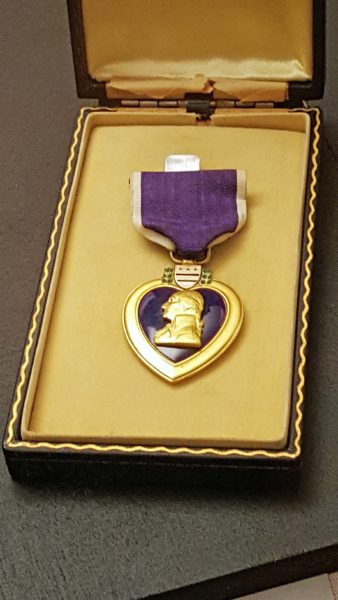
Freedom isn’t free. It’s a cliché, but it’s true.
